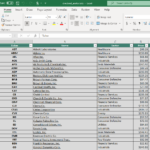© Reuters. FILE PHOTO: Travelers wait at John F. Kennedy International Airport in New York City, U.S., April 6, 2023. REUTERS/Eduardo Munoz/File Photo
By David Shepardson
WASHINGTON (Reuters) -Major U.S. airlines on Monday asked the Federal Aviation Administration to extend cuts to minimum flight requirements at congested New York City-area airports and a Washington airport, citing a lack of adequate air traffic control staffing.
The FAA in March agreed to the request of Delta Air Lines (NYSE:) and United Airlines to temporarily return up to 10% of slots and flights at New York-area airports and Washington National Airport through Sept. 15.
Airlines for America, a trade group representing major carriers, in a letter seen by Reuters, asked that the cuts be extended through Oct. 28, saying air traffic staffing levels in a key northeastern sector have not “meaningfully improved.”
The FAA said Monday it was “is in the final stages of review and will decide soon.”
Airlines can lose their slots at congested airports if they do not use them at least 80% of the time. In the Airlines for America letter, the group said air traffic control staffing and extreme weather “are unique circumstances beyond our control.” The group added: “Granting relief for the rest of the summer season is in the best interest of the flying public because it will minimize disruptions and provide greater predictability for airlines and consumers.”
Last month, Chicago-based United said it would drop to about 395 daily flights from 410 at Newark Liberty International Airport after planning 438 on peak days before the FAA waiver.
In June, a government audit said the FAA faces critical air traffic staffing shortages and “lacks a plan to address them.”
The audit said New York Terminal Radar Approach Control (TRACON) staffing was at 54% compared with optimal levels; it had eight supervisors but was authorized for 30.
Last summer there were 41,498 flights from New York airports where air traffic control staffing was a contributing factor in delays.
In March, it said that later this year it planned to reassign approximately 100 square miles of Newark airspace from the area known as N90 to the Philadelphia Terminal Radar Approach Control to address staffing issues.
“Since the issuance of the March waiver, the Newark airspace has not been transferred, nor have the staffing levels at N90 meaningfully improved,” Airlines for America said in Monday’s letter.
















